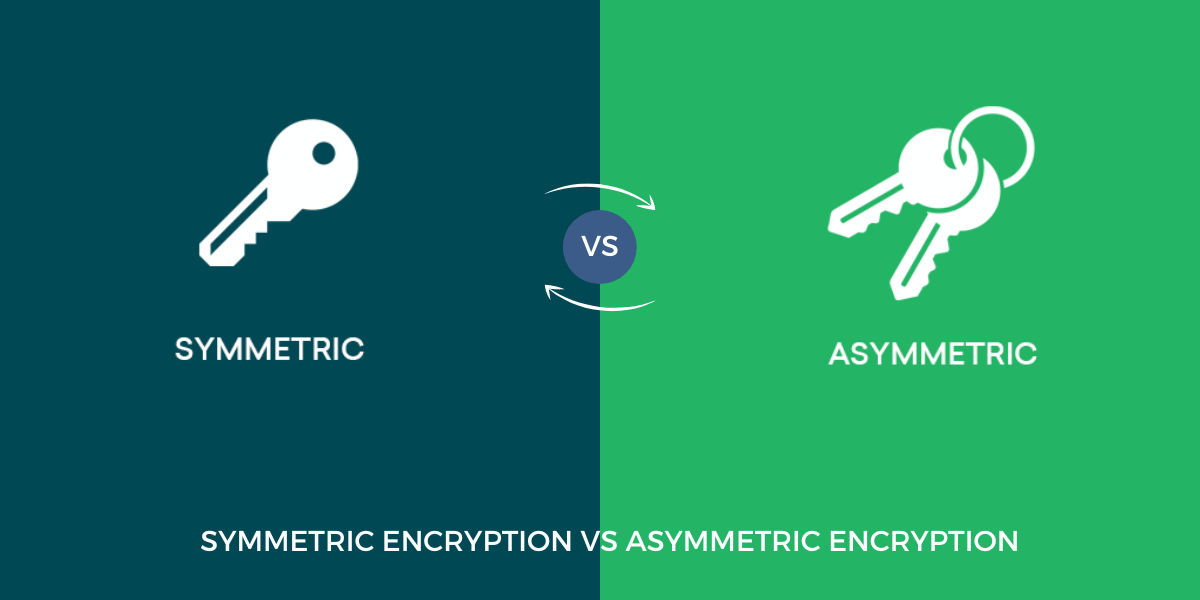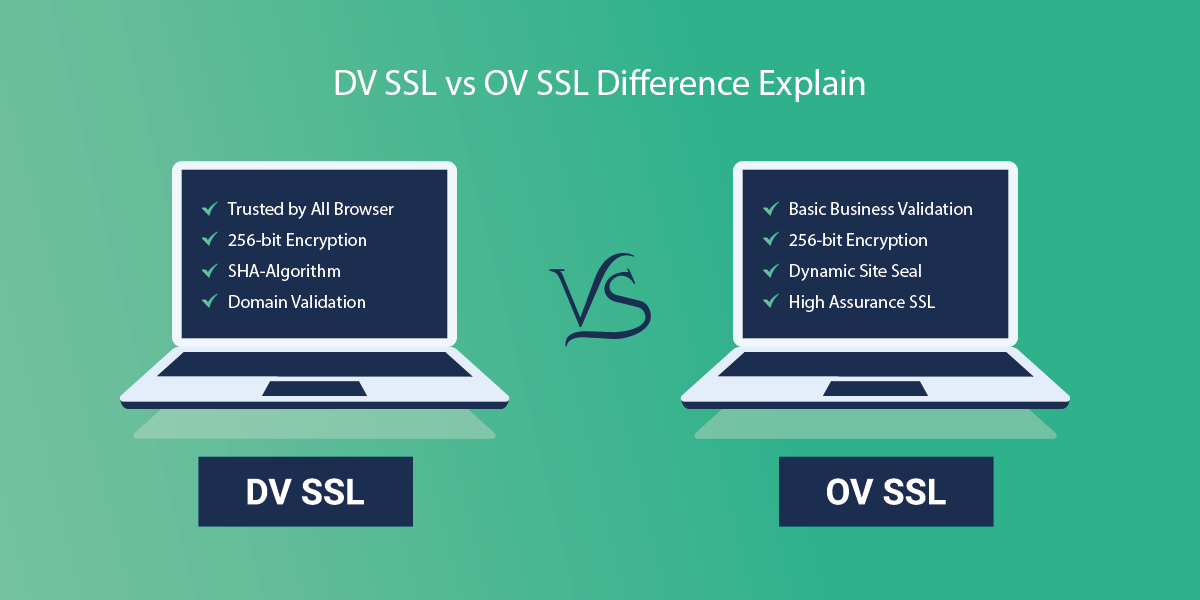Know the Difference Between Symmetric and Asymmetric Encryption
Encryption is an essential component of data security and privacy. It scrambles information to make it unreadable to unauthorized parties. There are two main types of encryptions: symmetric and asymmetric. While both protect data confidentiality, they work in different ways. This article provides an in-depth look at Symmetric Encryption vs Asymmetric Encryption, their key differences, and when to use each method.
A Side-by-Side Comparison Between Symmetric Encryption vs Asymmetric Encryption
| Feature | Symmetric Encryption | Asymmetric Encryption |
|---|---|---|
| Keys used | Single secret key | Public/private key pair |
| Key exchange | Requires secure exchange of secret key | Public keys can be freely shared |
| Non-repudiation | No, shared key provides no proof of identity | Yes, private key proves authenticity |
| Speed | Very fast | Slower due to computational overhead |
| Scalability | Not scalable; secure key exchange becomes difficult | More scalable thanks to public key distribution |
| Encryption method | Ideal for bulk data encryption | Better for smaller data sizes |
| Integrity verification | Requires additional mechanisms like MACs | Can provide integrity verification via digital signatures |
| Authenticity | Requires additional mechanisms like MACs | Public/private keys inherent prove authenticity |
| Vulnerability | Highly vulnerable if key is compromised | Increased resilience since private keys are not shared |
| Key persistence | Keys can be reused many times | Ephemeral session keys are short-lived |
| Algorithm examples | AES, RC4, Blowfish, 3DES | RSA, Diffie-Hellman, ECC, DSA |
| Use cases | Bulk data encryption, databases, backups | Secure web connections, authenticated messaging, digital certificates |
| Storage overhead | Lower storage needs for single keys | Public and private keys require more storage |
| Mathematical basis | Symmetric mathematical operations like XOR and substitution | Asymmetric math like prime factorization and discrete logs |
| Hybrid systems | Often used together, with asymmetric keys securing symmetric keys | Can be combined to get best of both; hybrid cryptosystems |
Symmetric Encryption
Symmetric algorithms use a shared secret key for both encryption and decryption. The sender and recipient must have the same key.
How Does Symmetric Encryption Work?
The symmetric encryption process follows these steps:
- The sender and recipient agree on a secret key.
- The sender encrypts plaintext with the key using a symmetric algorithm. This produces ciphertext.
- The sender transmits the ciphertext to the recipient.
- The recipient decrypts the ciphertext with the same secret key, reproducing the original plaintext.
The security of the encrypted data depends on the secrecy of the key. If unauthorized parties obtain the key, they can access the data.
Symmetric algorithms are designed so that decryption is reasonably fast. This makes them suitable for encrypting large volumes of data. The keys are also relatively short compared to asymmetric encryption.
Types of Symmetric Algorithms
Common symmetric algorithms include:
Stream Ciphers
Stream ciphers encrypt plaintext one bit or byte at a time. The keystream is XORed with the plaintext to produce ciphertext. Stream ciphers include RC4, ChaCha20, and Salsa20.
Block Ciphers
Block ciphers split data into fixed-size blocks then encrypt one block at a time. Popular block cipher algorithms are AES, Blowfish, DES, and 3DES.
Modes of Operation
Block ciphers require modes of operation like CBC, CTR, and GCM which specify how to handle blocks and key usage.
Message Authentication Codes
Message authentication codes (MACs) provide integrity and authenticity. HMAC is a MAC calculated from a hash and key.
Asymmetric Encryption
Asymmetric cryptography uses key pairs for encryption and decryption. One key encrypts; a different but related key decrypts. This resolves the key distribution problem with symmetric encryption.
How Does Asymmetric Encryption Work?
Asymmetric algorithms use public and private key pairs:
- The public key encrypts data. It is openly shared.
- The private key decrypts data. It is kept secret by its owner.
The encryption process consists of:
- Each user generates a public/private key pair.
- User A encrypts data with User B’s public key.
- User B decrypts the ciphertext with their private key.
This allows secure communication without prior exchange of secrets. User B publishes their public key freely while keeping their private key private.
Key Differences from Symmetric Cryptography
- Uses different keys for encryption and decryption instead of a shared secret key
- Keys are based on mathematical pairs and are longer than symmetric keys
- Only the private key holder can decrypt messages, providing non-repudiation
- More computationally intensive than symmetric encryption
- Used for secure transmission, digital signatures, authentication, and key exchange
Types of Asymmetric Algorithms
Common asymmetric algorithms:
- RSA– Based on the difficulty of factoring large prime numbers. Used for encryption and digital signatures.
- ECC(Elliptic Curve Cryptography) – Relies on points on an elliptic curve. Can achieve equivalent security to RSA with smaller key sizes.
- Diffie-Hellman– Allows two parties to secretly agree on a shared key. Used for secret key exchange.
Should You Choose Symmetric or Asymmetric Encryption?
- Use symmetric encryption for bulk data encryption and storage. The speed and simplicity are major advantages.
- Use asymmetric encryption for secure transmission and authentication. The keys provide identity and non-repudiation.
- Many protocols like SSL/TLS, PGP, and SSH use both symmetric and asymmetric cryptography together.
- Symmetric keys provide efficient data encryption. Asymmetric keys manage and exchange the symmetric keys.
The two methods complement each other well. Understanding their strengths allows you to choose the best encryption scheme for each purpose.
Real-World Uses of Symmetric and Asymmetric Encryption
Encryption has become essential for data security. Symmetric and asymmetric cryptography power many routine digital activities.
Symmetric Encryption Applications
- Bulk data encryption (e.g. hard drive encryption)
- Database encryption
- Securing backup files
- Encrypting archives for storage or transmission
- VPN tunnel encryption
- Wireless network data encryption
- Full disk encryption on devices
- Providing data confidentiality for applications
- Encrypting streaming media
AES and similar algorithms provide efficient bulk encryption. The keys secure access to entire hard drives or large data sets.
Asymmetric Encryption Applications
- SSL/TLS connections
- Signing and validating digital signatures
- User authentication
- Secure email with PGP/GPG
- Password-based key exchange like Diffie-Hellman
- Protecting access to cryptographic keys
- Code signing to verify software authenticity
- Verifying message integrity
Conclusion on Symmetric Encryption vs Asymmetric Encryption
Symmetric and asymmetric encryption are fundamental to modern cryptography and data security. Symmetric encryption provides fast and simple bulk data encryption using shared keys. Asymmetric encryption enables secure transmission and authentication through public or private key pairs. Using both techniques together allows cryptosystems to combine their advantages.
Asymmetric keys can facilitate secure exchange of symmetric keys for bulk data encryption. Understanding the core differences between the two methods enables selecting the optimal approach for each use case. Both symmetric and asymmetric cryptography play pivotal roles in securing data in the digital world.
FAQs About Symmetric Encryption and Asymmetric Encryption
What are the most common symmetric encryption algorithms?
The most widely used symmetric algorithms today are AES, Blowfish, RC4, DES, and 3DES. AES is the standard for government and commercial applications.
What key sizes are recommended for symmetric encryption?
For AES, a minimum of AES 128-bit keys are recommended, but 256-bit provides better security. Larger keys enhance protection against brute force attacks.
What are the differences between stream and block ciphers?
Stream ciphers encrypt data one bit or byte at a time. Block ciphers split data into fixed blocks and encrypt one block at a time. Stream ciphers are faster but more vulnerable.
Which asymmetric algorithm has the smallest key sizes?
For equivalent security, elliptic curve cryptography (ECC) allows much smaller key sizes than RSA. ECC SSL also computes faster than RSA for common key lengths.
How does the Diffie-Hellman key exchange work?
Diffie-Hellman allows two parties to establish a shared secret key over an insecure channel without transmitting the actual key. It uses discrete logarithm math to securely generate a common key.



